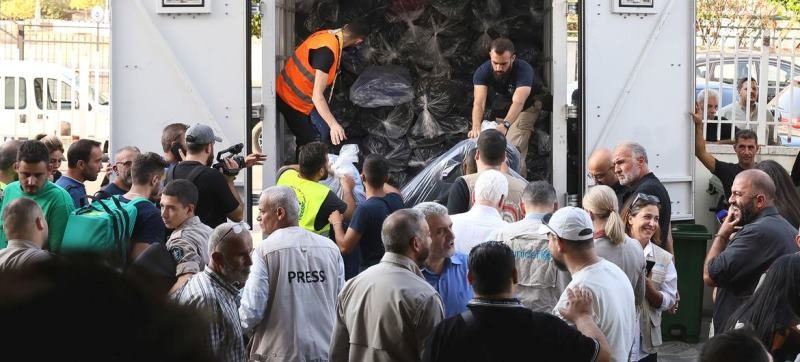- Guterres Urges Leaders to Act as UNGA Week Begins |
- BNP to go door to door for hearts and votes |
- Chittagong port tariffs increased up to 50 per cent |
- Rising Heat Cost Bangladesh $1.8 Billion in 2024 |
- Stocks extend gains; turnover drops in Dhaka, rises in Ctg |
This is just beginning, say those hit by Lebanon escalation

Distribution of water, blankets and hygiene kits in Beirut, Lebanon, where rural communities have fled seeking assistance. © UNICEF-Fouad Choufany
27 September 2024 - The sudden and massive escalation between Israel and the Hezbollah armed group in Lebanon has created widespread fear that even worse is to come, UN humanitarians said on Friday.
“We are witnessing the deadliest period in Lebanon in a generation and many expressed their fear that this is just the beginning,” said Imran Riza, the UN’s top aid official in Lebanon. “The UN and its partners are closely coordinating with the Lebanese government to support the response efforts. This includes aligning aid distribution, conducting joint assessments, and identifying urgent needs for affected populations.”
Speaking from Beirut, Mr. Riza, the UN Humanitarian Coordinator in Lebanon, said that for nearly a year, the country’s people – and especially those in the south – had “lived in fear” that the war in Gaza could come to them.
Today across Lebanon, thousands of people in rural communities previously unaffected by Israeli targeting of Hezbollah infrastructure have fled bombardment and widespread destruction that have claimed at least 700 lives, injured thousands and uprooted around 120,000 people “within mere hours”, he said, adding: “We are running into people that are saying, ‘What’s the way to Tripoli? How do we get to there?’”
The UN aid coordinator’s comments come amid increasingly intense exchanges of fire across the UN-patrolled line of separation between Lebanon and Israel since 7 October when war erupted in the Gaza Strip. Last week’s extraordinary targeting of Hezbollah pagers and walkie-talkies left hundreds dead and signalled the start of intense Israeli bombardment in Lebanon and retaliatory strikes by Hezbollah.
Relative safety
Tens of thousands of people have fled Lebanon for the relative safety of Syria at various crossing points which have been open 24 hours a day, the UN refugee agency (UNHCR) confirmed. “Where people are crossing into Syria, so far they are safe,” said Gonzalo Vargas Llosa, UNHCR Representative in Syria, at the Syria-Lebanon border.
“We of course would make an appeal not only for the bombings in general to stop but also of course to avoid bombing people who are trying to flee.”
Mr. Vargas Llosa described “large numbers of people” returning to Syria, a reference to some of Lebanon’s approximately 1.5 million Syrians who have fled their country’s civil war since 2011. “The estimate is that this figure is now well over 30,000 with about 75-80 per cent of those Syrians and the other 20 per cent or so Lebanese,” the UNHCR official said.
Young lives lost
“We have seen quite a few injured arriving; people who have been injured not only through the very arduous journey on the way here, but also injured as a direct result of the bombings in Lebanon.
“We saw a woman crossing with two dead children from Lebanon who were to be buried here in Syria.”
Back in Lebanon, UN humanitarians continue to provide aid coordination to assist the Lebanese government. Nearly 500 shelters have been opened for around 80,000 displaced people, including 300 schools that have been repurposed, impacting the education of over 100,000 students.
But “critical funding gaps” persist in many areas, including shelter repair, site management, food stocks, fuel and coordination, Mr. Riza said, before warning that Lebanon’s health system has been “completely overwhelmed” by the serious escalation in hostilities.
“We have done a great deal of preparedness work and luckily we have managed to get trauma kits and the like in and tried to have them distributed also throughout the country because now the displacement is happening not just in south,” he explained.
“For the first 11 months it was mainly the south - it was mainly the Bekaa [Valley]... But now it’s throughout the country.” – UN News

